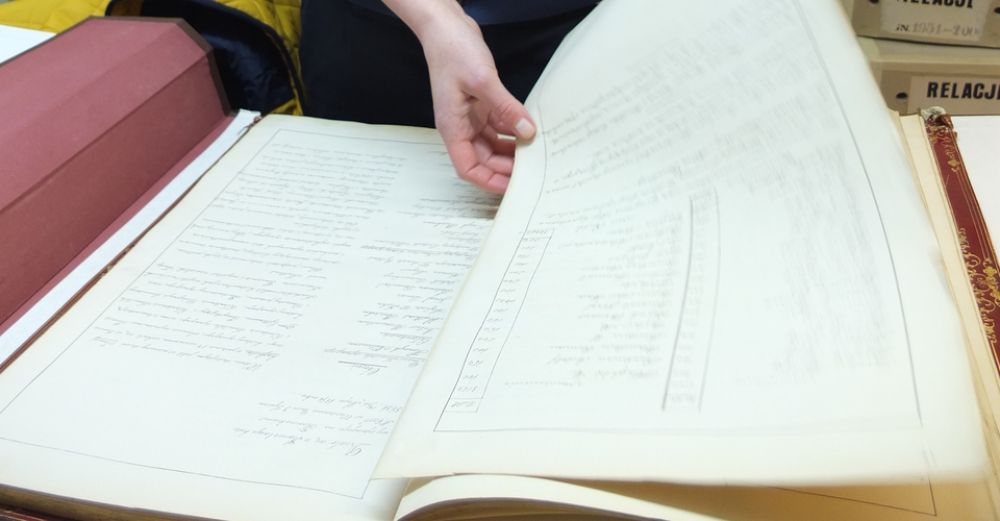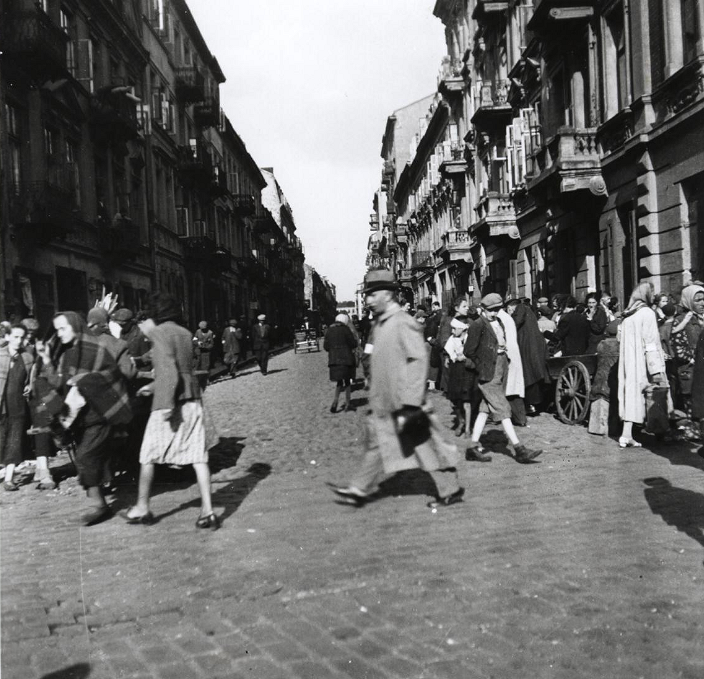- News
- Events
- Oneg Shabbat
- Collections
- Research
- Exhibitions
- Education
- Publishing Department
- Genealogy
- About the Institute
- Bookstore


April is a month unique for history of old Warsaw places and old Warsaw in general. In April of 1943 some Warsaw streets and sites ceased to exist and together with them passed away recollections and people preserving those places’ memory. Fortunately, not everything has been destroyed and even though some places do not exist in its original form, thanks to people who survived and who remember them, we can recreate play that world.
Mr Hirsz from Israel came to Poland together with his two adult daughters in order to see one more time places where he grew up, to show his daughters his memories and unintentionally to introduce us to his life. From his story, we learned that he was born in Warsaw in 1929 and that together with his parents Rachela and Samuel he lived at Miła 18. A historically complex time of his youth, does not change in his history, typical stories of a then-teenager.
He went to a regular public school, he had Polish and Jewish friends. He was an ordinary young Warsavian, like thousands of boys that came before and after him. He used to learn Polish songs that sang after 70 years evoked emotions in him and everyone in our room.
He is riding, he is riding, on Kasztanka, on Kasztanka
Silver gunner’s suit, silver gunner’s suit.
Hey, hey, commander, my kind leader
When Hirsz sang sang, one of his daughters said that whenever he only begins to sing in Polish, something in him changes as if he was looking back to Miła street, to his school friends, to times of youth, and then we sitting next to him, feel that in a way we participate in his story. Later he told us that he used to go with his friends to Dzika street, corner of Stawki street and by the railways sidings they were eating cucumbers. He then falls silent and after a while we realize that we know this place as Umschlagplatz and we do not need to add or explain anything because everyone who hears that name knows what it means.
When he says that he lived with his parents at Miła 18 at first we do not think about standing there rows of tenement houses, about shops offering all kinds of items, we do not think about juice brewhouse, Gutgold’s lamps manufacture or of any other manifestation of the pre-war life, but we imagine the Bunker and the leaders of the Warsaw Ghetto Uprising, with Anielewicz in front, who were hiding and then died there.
The story of Hirsz touches all of us. It touches his daughters, us, it touches today’s Warsaw places that remind us of the Miła St history and its surroundings. Because before Miła 18 was marked by brutal history, it was an ordinary, Warsaw street, just like Gęsia or Stawki.
Thus, bearing in mind the upcoming anniversaries, about the uprisings, the fighters and “ordinary” people of ghettos, immediately let us think about people and about what life they led before the year 1939, the year that changed everything.
We, in Genealogy Center, are fortunate because everyday we meet with history of a normal life from before the war, thanks to people like Mr. Hirsz from Israel, or rather we should say Herszel from the Warsaw Muranów.
